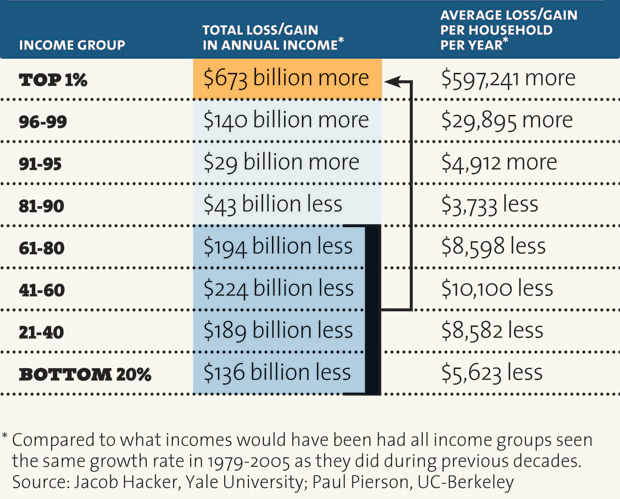Here’s another excerpt from the Mother Jones article, Plutocracy Now.
If unions had remained strong and Democrats had continued to vigorously press for more equitable economic policies, middle-class wages over the past three decades likely would have grown at about the same rate as the overall economy—just as they had in the postwar era. But they didn’t, and that meant that every year, the money that would have gone to middle-class wage increases instead went somewhere else. This created a vast and steadily growing pool of money, and the chart below gives you an idea of its size. It shows how much money would have flowed to different groups if their incomes had grown at the same rate as the overall economy. The entire bottom 80 percent now loses a collective $743 billion each year, thanks to the cumulative effect of slow wage growth. Conversely, the top 1 percent gains $673 billion. That’s a pretty close match. Basically, the money gained by the top 1 percent seems to have come almost entirely from the bottom 80 percent.
And what about those in the 80th to 99th percentile? They didn’t score the huge payoffs of the superrich, but they did okay, basically keeping up with economic growth. Yet the skyrocketing costs of things like housing and higher education (PDF) make this less of a success story than it seems. And there’s been a bigger cost as well: It turns out that today’s upper-middle-class families lead a much more precarious existence than raw income figures suggest.
Whole thing here: Plutocracy Now: What Wisconsin Is Really About | Mother Jones.



